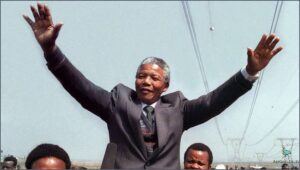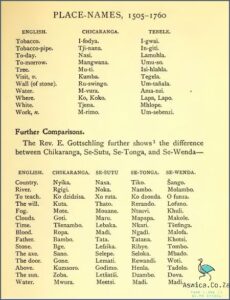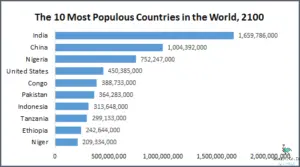
The response to Apartheid in South Africa was complex and varied. During the period of apartheid, from 1948 to 1994, there were a number of different strategies employed by different groups in South Africa to oppose the oppressive regime. These strategies included non-violent protest and civil disobedience, armed struggle, international pressure, and grassroots organizing.
Non-violent protests, such as the Defiance Campaign of 1952, were organized to oppose apartheid laws, and to call attention to the injustice of the regime. This strategy was adopted by the African National Congress (ANC). Other civil disobedience campaigns, such as the South African Student Movement and the United Democratic Front, also sought to challenge the system.
In addition, some South Africans took up arms in an effort to overthrow the regime. The African National Congress (ANC) created an armed wing, Umkhonto we Sizwe, in 1961. This group carried out a number of sabotage operations against the apartheid government. Other groups, such as the Pan Africanist Congress (PAC) and the Azanian People’s Liberation Army (APLA), also employed armed struggle against the regime.
In addition to these strategies, international pressure was also brought to bear on the South African government. International
Contents
How Did South Africa Respond To Apartheid
South Africa responded to the Apartheid in a few different ways. Firstly, many South Africans, both black and white, actively protested the unjust laws of the Apartheid. This involved both peaceful protests and civil disobedience as well as violent uprisings and demonstrations. Additionally, many countries and organizations around the world imposed economic and political sanctions on South Africa in order to pressure them to end the Apartheid. These sanctions caused economic hardship in South Africa, but were ultimately successful in bringing an end to the Apartheid. Finally, in 1994, South Africa held its first free and fair democratic elections which saw Nelson Mandela become the first democratically elected president of South Africa, signaling an end to the Apartheid.
Non-Violent Responses to Apartheid

The South African response to Apartheid was a long and complex one, that was composed of both violent and non-violent responses. While the violent responses are often more widely discussed, the non-violent responses are just as essential to understanding how South Africa was able to eventually dismantle its oppressive system. Here, we take a look at the non-violent responses to Apartheid that were integral to bringing about the country’s liberation from racial oppression.
One of the most well-known non-violent responses to Apartheid was the Defiance Campaign of 1952. Initiated by the African National Congress (ANC), the Defiance Campaign aimed to make it harder for the Apartheid government to enforce its laws by encouraging individuals to break them. This included civil disobedience, such as refusing to carry passes, boycotting segregated services, and even peacefully occupying ‘whites-only’ areas. The Defiance Campaign was a crucial part of the push to bring an end to Apartheid, as it showed the government that its oppressive rule would not be accepted without protest.
Another key non-violent response to Apartheid was the cultural boycotts of the 1980s and 1990s. During this time, a number of countries and organisations imposed economic sanctions on South Africa in a bid to put pressure on the Apartheid government. This included a cultural boycott, which saw global sporting events and cultural exchanges being cancelled or postponed. This was an incredibly effective tool, as it highlighted the international community’s disapproval of Apartheid, and forced the South African government to reconsider its policies.
Non-violent protests were also a crucial part of South Africa’s response to Apartheid. These protests took a variety of forms, from marches and vigils to hunger strikes and sit-ins. These protests were used to draw attention to the plight of those living under Apartheid, mobilise public support, and demonstrate the commitment of those fighting against the system.
The South African response to Apartheid was multi-faceted and complex, and while it was often violent in nature, there were also many non-violent responses that were essential in bringing about change. The Defiance Campaign, cultural boycotts, and various non-violent protests were essential elements of the anti-Apartheid movement, and ultimately helped bring about the country’s liberation from racial oppression.
The Role of the African National Congress
The African National Congress (ANC) has been a major force in the fight against apartheid in South Africa. Founded in 1912, the party has been at the forefront of the struggle for freedom, equality, and justice for all South Africans for more than a century. Throughout its history, the ANC has been a driving force in the fight against racial discrimination and segregation.
The ANC’s commitment to the struggle for freedom began in the early 1920s. The party’s founding members, such as J. T. Gumede and Pixley ka Isaka Seme, were determined to fight for the rights of the African people. This commitment was further cemented in 1943, when the party was formally established.

In 1948, the National Party was elected to power in South Africa on a platform of racial segregation and discrimination. In response, the ANC launched its Defiance Campaign in 1952, which called for non-violent civil disobedience to oppose the government’s unjust policies. This campaign saw thousands of South Africans take to the streets to demonstrate their opposition to apartheid.
In the decades that followed, the ANC became increasingly active in opposing apartheid. It launched the 1959 Freedom Charter, which called for the creation of a unified, non-racial South Africa. The party also played a major role in the 1976 Soweto uprising, when thousands of students took to the streets to protest the government’s oppressive policies.
The ANC also spearheaded the international campaign against apartheid, gaining support from many countries around the world. This campaign was strengthened in the 1980s, when the party began to focus more on armed struggle. It was during this period that the ANC established an armed wing, Umkhonto we Sizwe, which launched a series of attacks against government targets.
By the 1990s, the ANC had become the most powerful force in the struggle against apartheid. The party’s leader, Nelson Mandela, was released from prison in 1990 and the ANC was unbanned by the government in 1991. In 1994, the ANC won the first democratic elections in South African history and Mandela became the first black president of the country.
Since that time, the ANC has continued to play a major role in South African politics. It has been in power since 1994 and has implemented a number of reforms to help improve the lives of South Africans. The party has also been at the forefront of the fight against poverty and inequality in the country.
The ANC remains one of the most important forces in the struggle against apartheid. It has been a powerful voice for freedom, equality, and justice for all South Africans for over a century. Its commitment to the struggle for freedom and equality has been unwavering, and its contribution to the transformation of South Africa is undeniable.
International Reaction to Apartheid
The international reaction to apartheid in South Africa was one of condemnation and outrage. Apartheid, a system of legally enforced racial segregation, was seen as abhorrent and violated the fundamental human rights of South Africans. Consequently, the international community responded with various forms of sanctions, embargoes, and boycotts against the South African government.

The United Nations (UN) was one of the first international bodies to react to apartheid. In 1973, the UN General Assembly adopted a resolution that declared apartheid a “crime against humanity” and called for all states to “strongly condemn the policies and practices of apartheid and racial discrimination in South Africa.” This resolution was followed by various other UN resolutions, including the 1977 International Convention on the Suppression and Punishment of the Crime of Apartheid.
Western countries also responded to apartheid in South Africa. In the mid-1980s, the United States and several European countries imposed economic sanctions on the South African government. These sanctions included an embargo on the sale of oil, arms, and nuclear technology to South Africa. Additionally, several countries, including the United States, banned the import of South African goods.
Other countries, like Canada and the United Kingdom, responded to apartheid with a policy of constructive engagement. This policy sought to influence the South African government by engaging in diplomatic dialogue, while continuing to trade with the country.
Apartheid also provoked a global boycott movement. Student and labor groups around the world campaigned against apartheid by boycotting South African goods, sports teams, and cultural events. This boycott movement eventually led to the sporting isolation of South Africa, which was banned from many international sporting events, including the Olympics and the Rugby World Cup.
The international pressure on the South African government eventually led to the repeal of the apartheid laws in 1991. The South African government then began to implement a process of racial reconciliation and democracy. This process eventually culminated in the election of Nelson Mandela as president in 1994.
The international reaction to apartheid in South Africa was an important factor in the eventual downfall of the system. While the regime was able to survive for many years, the combined pressure from the United Nations, Western countries, and the global boycott movement eventually forced the South African government to reform.
Conclusion
Apartheid was a system of racial segregation in South Africa that was in place from 1948 to 1994. During this time, the rights of black South Africans were severely limited, and they were segregated from the white population in schools, hospitals, and other public facilities. In addition, they were not allowed to vote or hold office.
The South African government’s policy of apartheid was met with strong opposition from the black population, as well as from many white South Africans. This opposition led to protests, violence, and economic sanctions from other countries. In the end, apartheid was dismantled and black South Africans were given the same rights as white South Africans.




